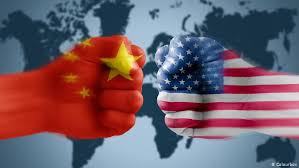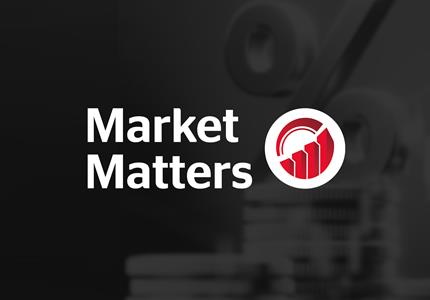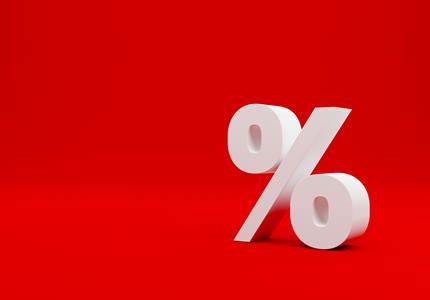

Boscher's Big Picture - Long-term legacies of COVID-19
The COVID-19 crisis could prove to be the most important shock to the global economy this decade. It will likely take years for its legacies, and the subsequent policy response, to fully make themselves known, felt and understood. In my view, the pandemic and the reaction of individuals, companies, governments and central banks to the health scare will have a number of implications for the global economic and geo-political environment for years to come.
Deficits and debt

Firstly, most developed economy governments have embarked on “shock and awe” fiscal easing to rescue their economies and fight the pandemic.
So far it is estimated that global fiscal easing totals in excess of US$15tn, which is equivalent to approximately 17% of 2019 global GDP and it is very likely that more will be forthcoming, if needed.
This spending, which will include ramped up investment in infrastructure and technology, will drive fiscal deficits and public debt levels to unprecedented high levels. For example, the US fiscal deficit is forecast to increase to in excess of 20% over the next few years, which was last the case in the 1940s after World War II. Public sector debt in the US is estimated to increase from around 100% to closer to 140% by 2025, still some way below the 240% level of Japan.
At the same time, central banks, led by the Fed, have reduced interest rates to zero or below whilst expanding their balance sheets to unprecedented levels. They have injected huge amounts of liquidity into the system in order to stabilise markets and the economy and support fiscal spending plans. This is nothing new, of course, and central bank balance sheets exploded following the 2008 Global Financial Crisis (GFC). However, the magnitude and nature of this policy response is different in a number of ways. Both the Fed and the ECB have eased restrictions on the quality of assets that they are prepared to buy as part of their QE programmes. The Fed is buying commercial paper, corporate investment grade and high yield bonds and providing loans direct to business. The ECB has recently been buying “fallen angels” (investment grade issues that have been downgraded to high yield) from banks as collateral for loans.
A decade ago, the investment world was shocked when the Bank of Japan began buying corporate bonds and equities. Today, the rest of the developed world is moving in the same direction and we may well see the Fed, ECB etc. owning very significant portions of the corporate debt markets together with equities in due course.
Central banks have also agreed to effectively finance the massive increase in government spending at the same time as extending loans directly to the economy, thereby functioning as commercial banks, but with unlimited balance sheets. In summary, monetary policy is now intimately commingled with fiscal policy in order to be effective, suggesting that the new economics of Modern Monetary Theory (MMT) has already been adopted by policymakers around the world.
A new normal

At present it is uncertain how and when governments and central banks will unwind these policies and imbalances in the coming years. There are good reasons to deduce that they will be slow to do so and, indeed, may never unwind them. Given the scale of the demand and supply-side shock to the global economy, which is still largely unknown, it will likely take between one and three years for the global economy to get back to its pre-crisis levels. Also, with government debt, deficits and spending forecast to rise to record levels, it will be very important for central banks to keep the cost of financing for governments (and corporates) at very low levels for the foreseeable future.
Hence, interest rates are expected to stay around zero for years to come and we may even see negative rates in the UK and US before this cycle comes to an end.
Central banks will also need to continue to keep yields low across the yield curve through the combination of interest rate policy, QE, forward guidance (communicating their strategy clearly) and financial repression, forcing other investors to take on more risk in a search for yield. The Bank of Japan has been successfully following these policies for a very long time and the Fed and others have also pursued similar practices since the GFC.
The effect on the Eurozone

This crisis is also a hugely significant test for Europe, and the Eurozone in particular. The GFC and debt crisis of 2011/12 decimated the southern Eurozone economies and left a significant scar on the common currency regime. The COVID-19 pandemic has greatly deepened the already yawning divide between the Eurozone’s northern and southern members.
The initial rejection by Germany and the Netherlands of the proposed joint “Coronabond” issuance, which would have provided much needed fiscal transfers to Italy, Spain and Portugal, was delivered at a time of a massive health crisis, staggering economic losses and tragic human suffering.
It was also seen as an open snub at the financially strained southern members, which prompted French President Macron to issue a stark warning that the EU could unravel unless it embraces financial solidarity.
The good news is that common sense seems to have prevailed.
Following the announcement of a plan by Angela Merkel and Emmanuel Macron, the European Commission has announced an intention to issue debt, which will be repaid with EU-wide taxes, in order to fund a €750bn rescue package for the region. Importantly, the Commission wants to distribute the majority of this via grants rather than loans, which will help alleviate the already high and growing debt burdens for the beleaguered southern countries. If approved, this would be the first time that the EU itself would issue common debt in order to leverage its budget and adopt public-spending policies, thus taking a big step towards greater fiscal union. This is far from a done deal and is currently meeting resistance from the “frugal four”, which consists of Austria, Denmark, the Netherlands and Sweden. However, assuming that the powerful backing of Germany pushes this deal through, then it establishes a potentially game-changing approach to common debt and, indeed, for the common currency system. A rejection or watering down of the plan would cast a long shadow over the sustainability and integrity of the Euro itself.
China V America

It was already evident long before COVID-19 that escalating China-US rivalry is a major threat to the global economy and world order. It is important to remember that the recent trade dispute between the two super powers, whilst of huge significance itself, is only a part of the growing confrontation. This is a long-term theme which will take many twists and turns and is about the emergence of China as a major economic, military and technological rival to the US. This particular crisis has added to the problem and spurred strong China-bashing among US politicians as Trump tries to find a scapegoat for America’s high mortality rate and large number of infections. Interestingly, nationalism is also on the rise among the Chinese who view America as an imperialist power that is trying to undermine China’s economic rise and bully them into submission.
In essence, President Xi Jinping’s populist inspiration of the “Chinese Dream” is not very different to Trump’s mantra of “Making America Great Again”.
In summary, the two economic and political giants will be on a collision course on multiple fronts this decade, and Sino-US relations are likely to be characterised by more confrontation and less cooperation.
The social impact
Finally, the 2008 GFC resulted in much public anger towards Wall Street and the political establishment, leading to a rise in political polarisation, populism, nationalism and racism around the world, as evidenced by Brexit and the election of Trump. The COVID-19 crisis is likely to further exacerbate these trends, causing potential social instability in the future. The pandemic has hurt the lower middle-income earners and minorities much worse than others from a financial perspective. This group may also have suffered a disproportionately larger share of infection or even mortalities, especially in the US given the lack of access to health insurance. The extreme economic pain caused by the voluntary shutdown of a large part of the global economy will likely bring to the fore many contentious and potentially explosive issues on social justice, income inequality and fairness of economic policy, perhaps hastening the retreat of globalisation and threatening the current form of capitalism itself. These trends could be made much worse by the fact that a liquidity driven recovery in financial markets would almost certainly increase the already huge gap between the working classes and the wealthy. It is clearly very difficult to predict exactly how these issues will pan out over the next few years but the rising trend in political radicalisation and populism will likely intensify in the post COVID-19 world.
In my next article, I will examine some of the other potential implications from this crisis including the possible transition from the disinflationary environment of the past decade or so towards a new inflationary cycle, in addition to the likely long-term ramifications for asset markets.


